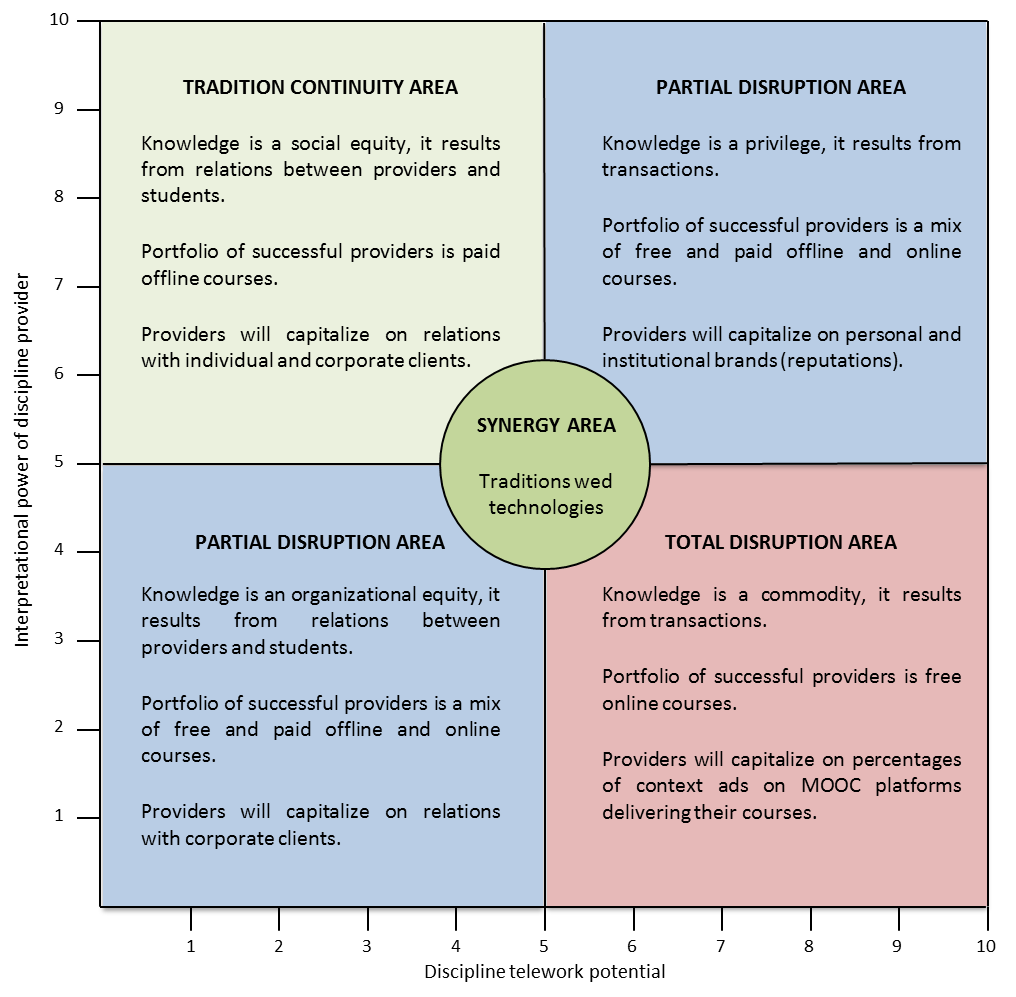(This is a repost from my PhD Freefall Blog of December 29, 2013)
All of us won't die, but we will all be changed.
(1 Corinthians 15:51 Common English Bible)
All of us won't die, but we will all be changed.
(1 Corinthians 15:51 Common English Bible)
MOOCs are on the hype, classroom teaching is facing a demise? For onlookers the educational industry is being rapidly, massively and chaotically disrupted. Grim comments of insiders readily support that feel of the end of teaching as we know it. But once knowledge providers - teachers and institutions - step out of the paradigm shift box, they admit the change is no chaos, it is just regrouping them by obscure criteria. The emerging groups will have to deal with new environments and live up to new karmas. Some may be rewarded for their die-hard fidelity to the teaching tradition. Others will give up business to newcomers for the very same strategy. Thirds will merely enjoy the synergy between the MOOC tech and classroom contact hours.
Based on such a concept, the key question will be "who's going where?"
I believe the MOOC impact on the teaching tradition is linked to the nature of disciplines. Two features of a discipline appear to be particularly important: its telework potential and the interpretational power of its provider. The former suggests how specific knowledge and skills will be exploited at future workplaces. The latter tells whether c'est le ton qui fait la chanson or vice versa. Those independent variables define how deeply the teaching tradition of a discipline will be affected by the change. In this concept they are the criteria by which advancing MOOCs reshape the educational industry, so applying them to one's case may spark some insights about his future.
To do so, position your portfolio of disciplines on the map below. Meet your emerging strategic group. Reconcile. Frame your personal or institutional strategy. (And don't take it all too seriously: the model has not been empirically tested.)
X axis. Score and sum up to assess the discipline telework potential:
1. What is the need for a practitioner, when applying the knowledge and skills he/she acquired from the discipline, to work face-to-face with colleagues, clients, suppliers and other organization stakeholders (Significant – 2, moderate – 1, insignificant or none – 0).
2. How does the technological progress influence the above need? (Increases – 2, has insignificant or no effect – 1, decreases – 0).
3. What is the current presence of telework practice in industries where the knowledge and skills of the discipline are employed? (Wide – 2, moderate – 1, insignificant or none – 0).
4. How does the technological progress influence the above practice? (Increases – 2, has insignificant or no effect – 1, decreases – 0).
5. What is the value of the knowledge and skills practitioners acquire from the discipline for organizational sustainability? (High – 2, moderate – 1, low – 0).
Y axis. Rank the interpretational power of the discipline provider:
1. What is the maturity of theories underlying the discipline? (None or nascent – 2, theories are being tested – 1, grounded and mature – 0).
2. What is the branch of sciences to which the discipline belongs? (Social – 2, formal – 1, life and natural – 0).
3. What is the rivalry of main communities (schools) which adhere to different paradigms in teaching the discipline? (Fierce – 2, moderate – 1, low or none – 0).
4. What is the social significance of the discipline providers? (High – 2, medium – 1, low – 0).
5. What is the convertibility of the discipline material to algorithms or infographics? (Full – 2, partial – 1, low – 0).

No comments:
Post a Comment